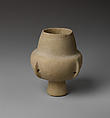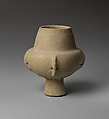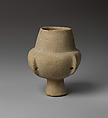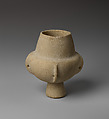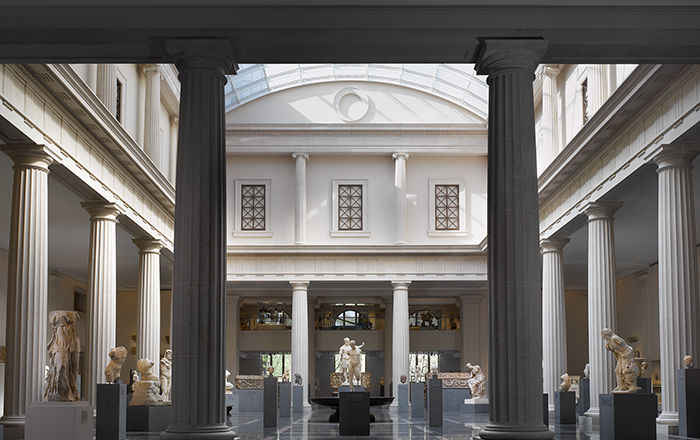On loan to The Met The Met accepts temporary loans of art both for short-term exhibitions and for long-term display in its galleries.
Marble vase with high foot and lug handles
Technical analysis: Ultraviolet-induced visible luminescence examination, optical microscopy
This vessel, carved from white marble, has two losses at the rim, a large shallow loss mid-body, and a loss on one of the handles, all of which have been filled and inpainted. Another handle has had a possible repair. The rim and handle edges are weathered and the surface overall has patches of accretion, especially heavy on the underside of the body and the foot.
The shape of the vase, also known as a kandila, after its resemblance to modern oil lamps of similar shape in Greek Orthodox churches, has a high conical foot leading up to a rounded hemispherical body that transitions to a high tapering neck with a rounded rim contoured on the exterior. The foot is concave underneath. Four vertical pierced lug handles are located around the middle of the body. The vessel has been attributed to the early phase of the so-called Kandila Sculptor A.
Produced in marble and clay, kandilai typically held liquids, such as oil or wine. Cords strung through the pierced lugs around the body could be used to hang the vase or attach a lid. Frequently found in tombs with marble figures, the vessels may have served a function in funerary rituals.
Alexis Belis and Wendy Walker
This image cannot be enlarged, viewed at full screen, or downloaded.
This artwork is meant to be viewed from right to left. Scroll left to view more.
